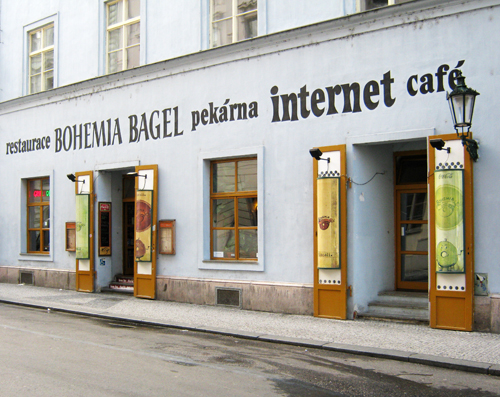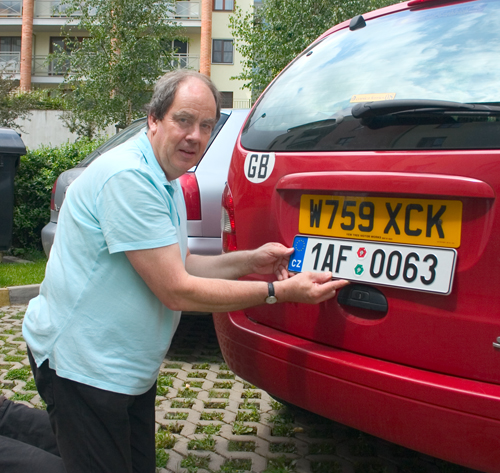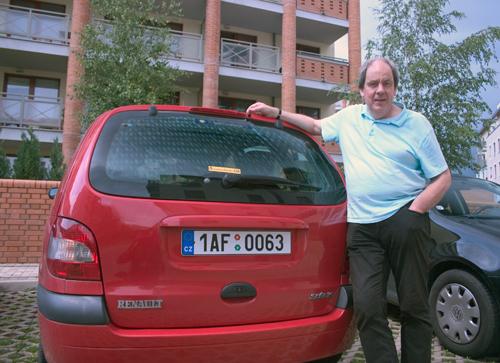

Earlier this year I received an email from an English young man called Lea, asking if there was a Czech language version of the Anglican ‘Common Worship’ Marriage Service. He was planning to marry a Czech young lady called Petra, at a venue near her home town of Olomouc in the east of the Czech Republic, and this was the liturgy that they wanted to use. As there would be both English and Czech speakers attending the wedding, they wanted the text in both languages.
One of the many helpful things left by my predecessor John Philpott, was a ‘Word document’ containing exactly the text that Lea had asked for. I forwarded it to him but wrote an accompanying note asking who was going to use it? If they were going to be married by an English-speaking minister from one of the Czech Churches, then surely that minister would want to use his/her own Church’s liturgy. On the other hand, if they were going to have a Czech civil ceremony followed by a Church service conducted by an Anglican priest imported for the occasion, then it was common courtesy for me, as the Anglican priest for the area concerned, to be consulted.
In reply, Lea and Petra explained that they didn’t yet have anyone to use the liturgy. But they had booked their wedding venue, the ‘chapel’ in Bouzov Castle, and that they had met with the local registrar and were in the process of completing all the necessary preliminaries to enable a legal wedding to take place. Once I explained that, because of my status as a priest in the Old Catholic Church in the Czech Republic, I could legally marry them, then they promptly invited me to do so. Thus on Friday 3rd July, I conducted my first Czech wedding and my first wedding of any variety since mid-August 2008.
Olomouc is a historic city in Moravia, part of the Czech Republic that neither of us had previously visited. Although it should only take about two and a half hours to drive there from Prague, we decided not to risk it and drove down on the Thursday evening in order to ensure we reached the wedding venue in good time the next day. Some good internet research by Sybille found us a very comfortable double room in the Poet’s Corner Hostel, an extremely interesting establishment owned and run by an ex-pat Australian.
Our ‘Lonely Planet’ Guide to the Czech & Slovak Republics describes Olomouc as ‘Prague minus the tourists’ and it is an apt description. We ate our evening meal in an open air restaurant on the square in the historic centre of the city. The architectural views surrounding us are reminiscent of Old Town Square in Prague. However, other than a small amount of German, we heard no other language spoken that evening except Czech and were far from being surrounded by hordes of people.
The next morning, after leisurely breakfast, we put on our best clothes and set off on the forty minute drive to Bouzov Castle. The castle is situated in the small village of Bouzov set in the rolling wooded hills of Moravia. It was a spectacular sight to see as we drove towards it. After parking in the official car park, we walked up to the main entrance to await the arrival of the wedding party. We had been warned that we would need to be admitted as one group all together to avoid any confusion, as the castle is also open to paying visitors. Eventually, everybody arrived and we were all escorted over the castle bridge and up the stairs to the the ‘chapel’.
As we had discussed back in April when I had met Lea & Petra for the first time, everybody had an order of service with the English liturgy on one side and the Czech translation on the other, using the very material that had been the subject of Lea’s original enquiry. Whilst I conducted the service in English, I did manage to greet the congregation at the beginning in Czech. I was assisted by a wonderful lady called Ivana, who helped Petra make her vows in Czech after Lea had made his in English. She also translated my short address into Czech.
My greatest fear was getting the registration of the marriage wrong. In advance of the service, I had filled out a four-page form all in Czech, which being part of Czech bureaucracy, inevitably required an immense amount of detailed information about the bride and groom, their respective parents, both witnesses and me. This included full name and address, date and place of birth, birth number for Czechs, passport number for non Czechs! Fortunately, John Philpott had also left me an annotated version of this form with guidance as to how to fill it out. Having completed it following his instructions, I got the ever-faithful Gerry Turner to double check what I’d done in Czech, before we set out for Olmouc.
It is this form, rather than two sets of Church registers, that is signed during the wedding service. Again, as I have explained previously in this blog, not only signed but, much more importantly, stamped!! As I raised my hand above the stamp that declares us to be the English-speaking parish of the Old Catholic Church in the Czech Republic, I said in English & Ivana said in Czech, “This is the most important part of a Czech marriage service!” Everybody smiled and laughed as I very firmly slammed the stamp down. It is this signed and stamped form which must be returned to the local registrar within two working days. The registrar will then issue the happy couple with their marriage certificate.
The service over, we were all escorted back out of the castle and then the newly married Lea and Petra walked down from the castle bridge hand-in-hand. As you can see, you cannot really have a much better setting than Bouzov Castle for your wedding photographs. An evening reception followed back in Olomouc.






